- Open today, noon to 5 pm.
- Parking & Directions
- Free Admission
The Myers House
See what's inside the house. View More
The history behind this amazing house. Read More
Get directions and schedule your tour. Learn More

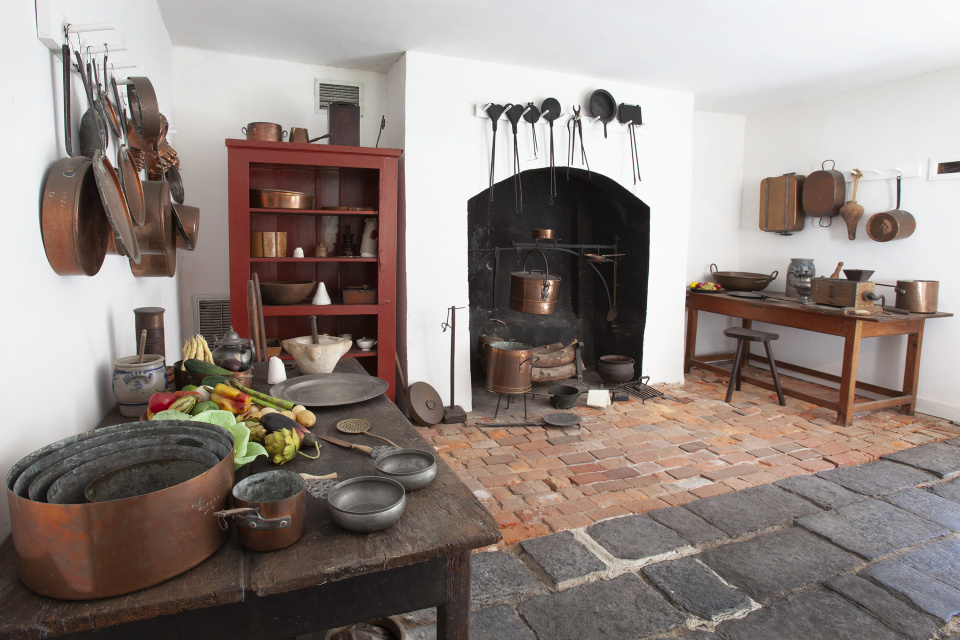
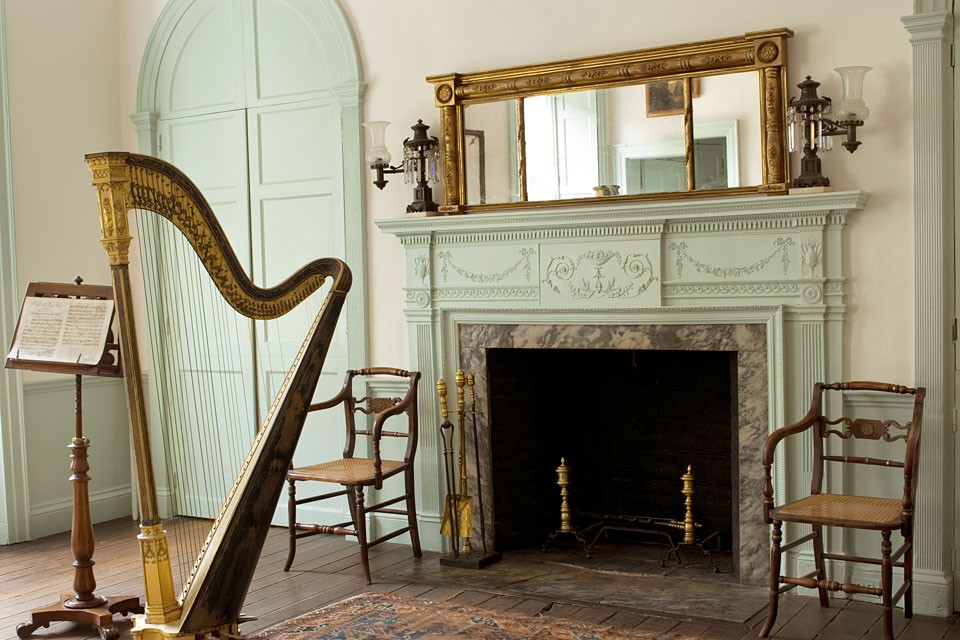
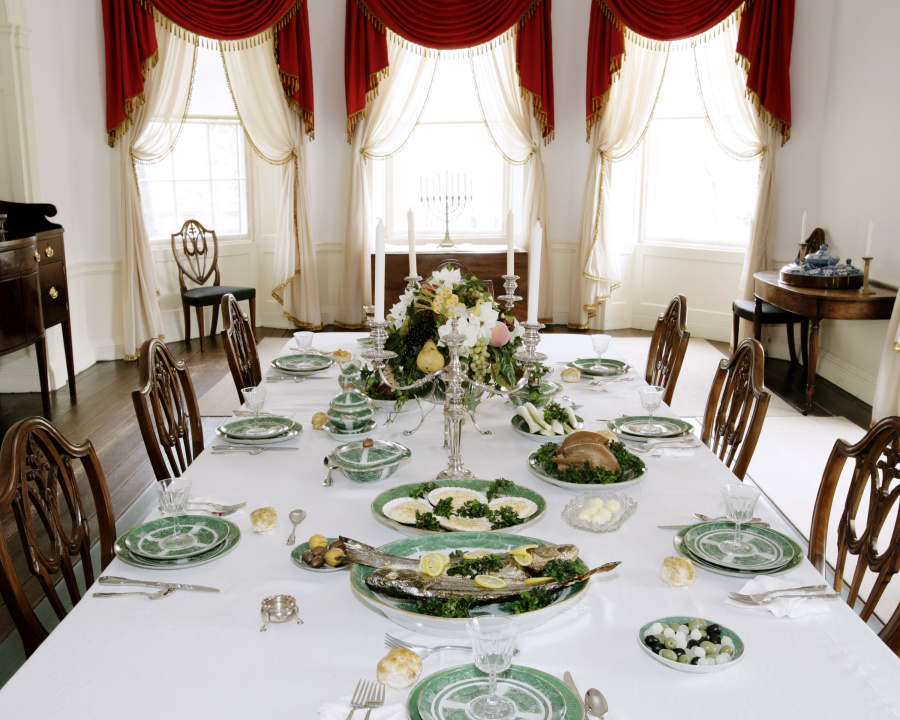
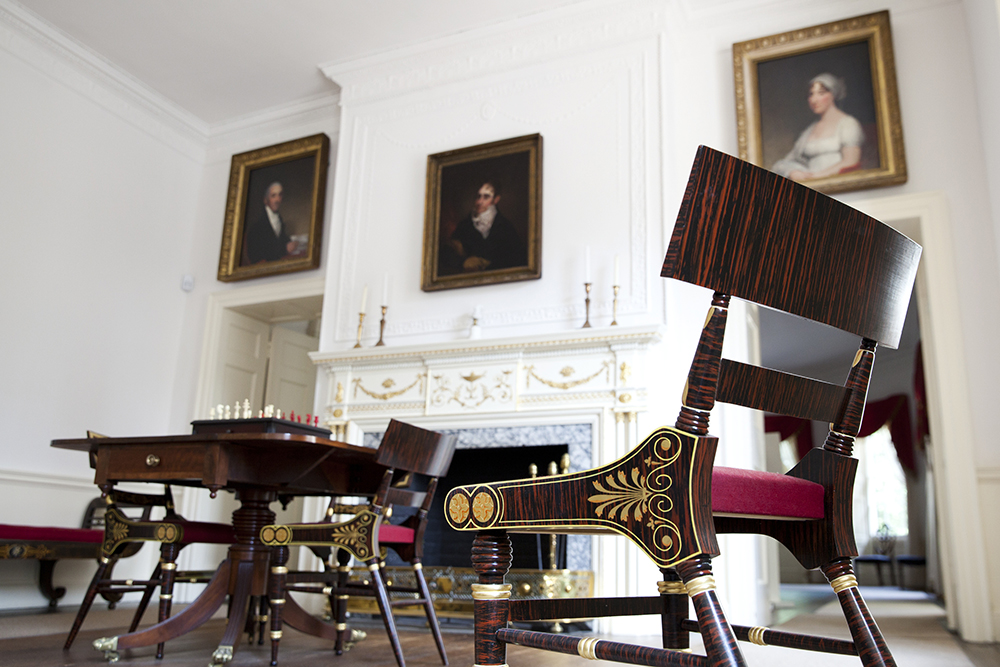
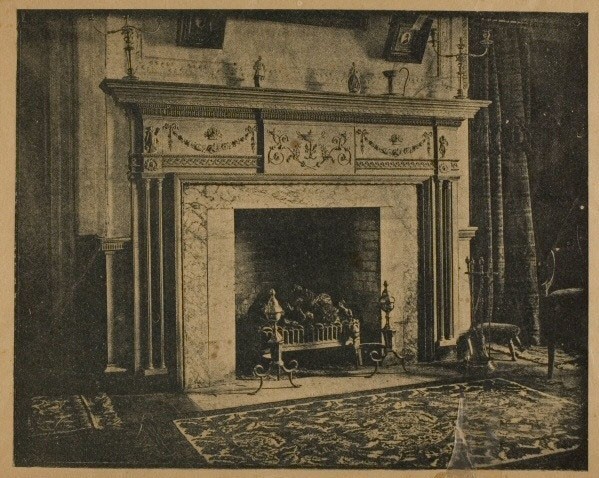
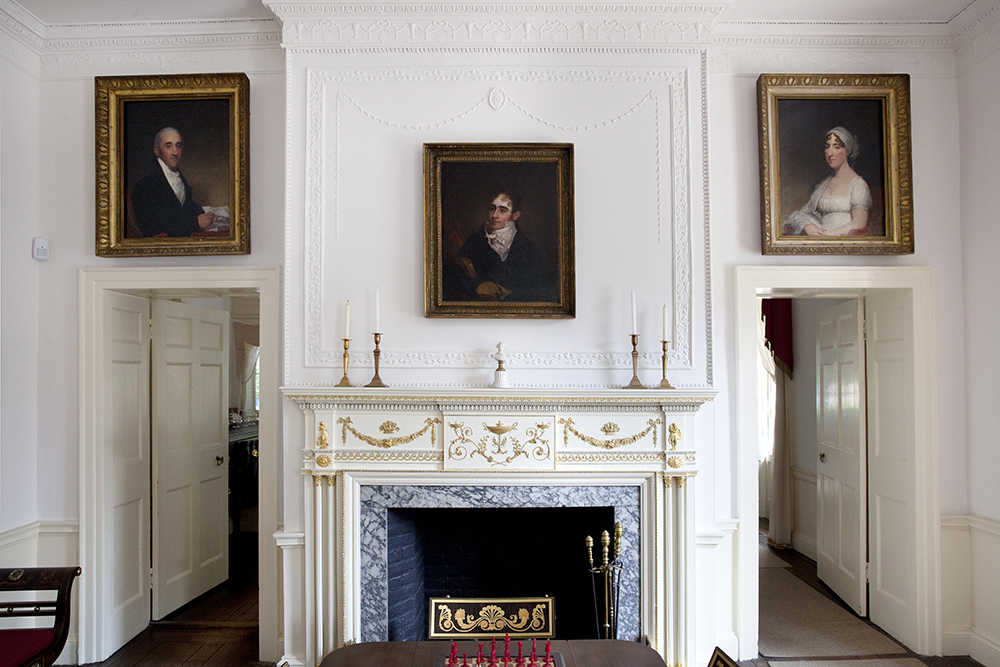
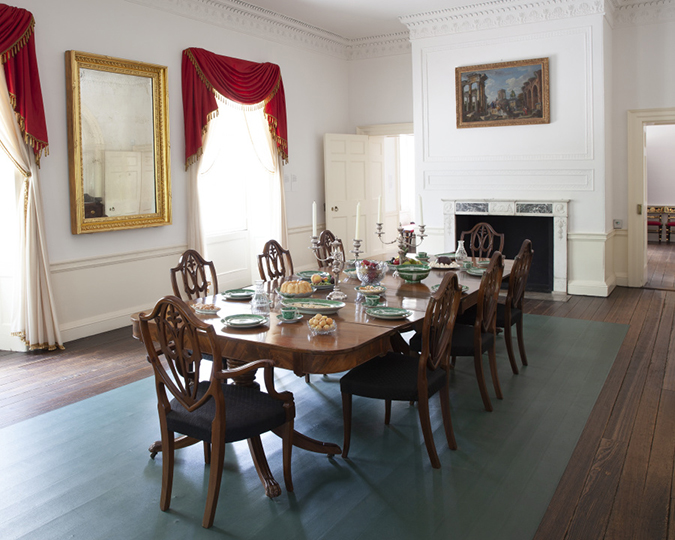
The Story
The stately Myers House and its peerless collection create an exceptionally accurate picture of the late Federal period and the life of this prosperous Jewish family. Moses Myers, an early American entrepreneur and leading citizen, built the house to accommodate his growing family and social prominence. The home was passed down through several generations of the family and eventually to Norfolk mayor Barton Myers. This site also addresses the issue of urban slavery through integrating the narratives and honoring the contributions of the people who were enslaved at the Myers House.
The Myers Family
Five generations of the Myers family lived in the Moses Myers House from 1795–1931. The Myers family attained a prominent position in Norfolk history, rising to become leaders in both economic and social affairs. In addition, they were the first permanent Jewish-American residents in the Norfolk area and composed the region’s entire Jewish population for over a decade.
The family’s greatest achievements were the result of the work of Moses Myers and Barton Myers. Moses Myers not only laid the foundation for the future prosperity of Norfolk, but he also began a Myers family tradition of community involvement and investment. The family served in local government and patronized theatre and the arts. Commercially, the Myers family made investments in improvements to transportation, such as railroads, steamship companies, and bridge construction projects, all of which made travel and trade into and out of Norfolk easier and more efficient. The family firm, Myers & Company, was one of Norfolk’s leading antebellum businesses and contributed to the reconstruction of Norfolk after the Civil War. Barton Myers guided Norfolk’s progress into the modern era of the twentieth century.
Although the Myers family made significant contributions in both the nineteenth and twentieth centuries, their activities during the early 1800s are the most completely documented. The Myerses and their correspondents would witness or be otherwise affected by most events of national and international significance during this period, allowing a unique look into a vibrant past.
Visit from Home
Friends of the Myers House
By helping to create and execute special projects and events, the Friends of the Myers House encourage collections conservation, research, and building preservation.
For information on joining this group of historic house advocates, contact Michael Berlucchi at (757) 664-6217.
Moses
Moses was born in New York City to Hyam Myers, a merchant from Amsterdam who came to the colonies in the 1740s, and Rachel Louzada, whose family had lived in New York since the 1680s. He moved with his family to Quebec in 1763, where he learned French, which he spoke along with his native English and his father’s Dutch. After serving briefly in the New York Second Battalion during the American Revolution, Moses entered into a business partnership with Samuel Myers, a distant cousin.
They opened offices in Amsterdam and St. Eustatia, which was an important waypoint during the British blockade of North America for supplies needed by the rebelling colonists. The island was occupied by British forces in February 1781. Between business losses at St. Eustatia and hard economic times following the Revolution, Moses, and Samuel were forced to stop payment in 1784. Samuel eventually secured a partial payment of debts owed to the firm, allowing him and Moses a fresh start. After marrying Eliza Judah Chapman in March of 1787, Moses moved to Norfolk and began rebuilding his import/export business.
Moses was actively engaged in the political and social life of his adopted hometown. He sat on the Common Council from 1794–1800, served as counsel to France and the Netherlands, achieved the rank of Major in the militia, was appointed Superintendent of the Norfolk branch of the Bank of Richmond, and was a founder of the Norfolk Chamber of Commerce. He provided financial support to the Presbyterian Church and donated land on which a theater was built.
Moses’s business suffered some hardship during the embargo of 1808–1809 and the War of 1812. After a rebound, his business was devastated as a result of the crash of 1819. He spent the rest of his years trying to satisfy his creditors and collect on debts owed him, both with little success. In 1827, he was appointed Collector of Customs for the ports of Norfolk and Portsmouth, a position he held until 1830. Moses passed away in 1835.

Eliza

Eliza was born in London in 1760 into the prominent Judah family and moved as a young child to Montreal. At nineteen, she married the frontiersman Abraham Chapman, who had followed the trade routes up the St. Lawrence and through the Great Lakes to become the first Jewish settler in Detroit. Abraham made his will in April 1783 and died shortly thereafter. The will mentions that Eliza was expecting, but as there is no further reference to the child it was probably stillborn or died shortly after birth.
Eliza married Moses on Passover Eve (March 22) 1787 in New York City and in July set sail for Norfolk on the ship Sincerity. In her new home, Eliza gave birth to twelve children, nine of whom survived to adulthood. She was widely known as a charming hostess, a devoted mother, and an excellent household manager.
The deaths, in close succession, of her two youngest sons, Abram (1821) and Henry (1822), broke Eliza’s health. In 1823, Frederick took her to Montreal for what they hoped would be a restorative visit with her family, but she passed away there in November.
John

The Myers’ eldest son showed a head for business even as a child. He began working with his father at age 13 and was made a partner in 1809 at age 21. John left for England in 1810 on a combined business trip and “Grand Tour” but was recalled in October 1811 as a result of his brother Sam’s shooting of Richard Bowden.
John was a civically engaged young man. He sat on the Board of Inspectors, served as consul to Sweden and Columbia, and achieved the rank of Major in the militia. He was active in local politics, a member of the Franklin Fire Company, and a founder of the Thespian Society.
During the War of 1812, John served as aide-de-camp to General Robert Taylor, who successfully defended Norfolk in the Battle of Craney Island. After the war, he moved to Baltimore and established a branch of Moses Myers & Sons. John overextended himself through speculation in sugar and other commodities and lost money through failed business ventures in Panama and Norway.
He stopped payment in June 1819, declared bankruptcy later that year, and served several months in debtor’s prison in 1820. After his release, John intended to move to New Orleans, but the deaths of his two youngest brothers and their effect on his parents made him feel duty-bound to remain in Norfolk. He became the Assistant Collector of Customs for Norfolk and Portsmouth in 1827 and died of apoplexy in 1830.
Sam

Sam attended William and Mary from 1807–1810 and was the college’s first Jewish graduate. After college, he read law briefly in Richmond but returned home in October 1810. By the spring of 1811, he had taken on a major role in the family business. In May of that year, Sam shot and killed Richard Bowden, a former business partner of Moses’s, after Bowden had beaten his father in the market square.
Sam was charged with manslaughter and jailed, but then released on bail pending his Circuit Court appearance the following May. He stayed with the Cohen family in Philadelphia until then. Sam was found not guilty in May of 1812 and spent the summer of that year in upstate New York with Adeline.
Sam was sent overseas from 1813 to 1815 to attend to family business. When he returned home, he married Louisa Marx and for the next three years divided his time between Richmond and Norfolk. In April of 1819, he closed his Richmond business and suspended payments. Sam and Louisa moved to Pensacola in 1821 to make a fresh start. He ran a successful law practice there but left due to the unhealthy climate and the general poverty in the area. He returned to Richmond and entered the commission business. Sam passed away in 1829.
Myer

Myer’s extensive travels in Europe for the family firm gave him polish; he was a gracious host known for his quick wit and genial humor and was an accomplished musician. In 1816, after a short trip to Jamaica, Myer traveled to New York, then England and the Continent, where he spent the next five years trying to determine the fate of a cargo of tobacco shipped to Norway. He also tried unsuccessfully to establish a triangle trade between Bremen, Santo Domingo, and either Norfolk or Baltimore.
Myer kept the $5,000 he finally recovered from the Norway claim as a payment for his services and used it to go into business for himself in Richmond. He married Judith Marx in 1826 and moved back to Norfolk after his other brothers passed away. Myer followed the family tradition of civic service, holding the offices of President of the Bank of Virginia and consul to Great Britain. He passed away in 1877.
Frederick
A serious young man, Frederick showed talent as a businessman early on. He kept his head above water financially during the crash of 1819 and purchased the family home in 1826 to keep it from creditors. Frederick was a member of the Franklin Fire Company and a Director of the Farmer’s Bank of Norfolk. He died in 1832.
Abram
Abram moved to Baltimore at age 17 to learn business from his brother John. By 1820, he and a partner were running a ship’s chandlery in Norfolk. In the summer of 1821, Abram went to Baltimore to escape the yellow fever epidemic. He returned to Norfolk in the fall, was stricken by a series of violent headaches, seemed to improve, but then died suddenly on November 18. He was buried across the Eastern Branch of the Elizabeth River on land recently set aside for a Jewish cemetery.
Henry
A frail and sickly child, Henry dreamed of joining the Navy. Moses was initially opposed to his desire but eventually consented. Midshipman Myers was ordered to Congress in April 1819; he sailed for Asia, returning in June of 1821 with gifts for his sisters and mother. Henry next sailed in Hornet to the Caribbean in search of pirates; he returned home in early 1822 and soon set out again. He died aboard ship of yellow fever in August, three days out of Norfolk.
Adeline
Adeline was an intelligent, engaging young woman, fluent in French and accomplished at the harp and pianoforte. She was betrothed to Norfolk grocer Solomon Nones, who tragically died in the summer of 1819 just days before their wedding, Adeline remained single, serving as her father’s hostess and household manager after the death of her mother in 1823. She passed away in 1832.
Augusta
Augusta was so bad-tempered as a young teenager that John suggested she be sent away to boarding school, but by her late teens, she had developed into a charming young woman. In 1826, she married Philip I. Cohen of Baltimore, whose family ran lotteries in Virginia, Maryland, and Washington, D.C. She had eight children and died in 1876.
Mary Georgianna
Georgianna was the baby of the family and everyone’s favorite. She never married, and cared for her father in his old age and remained in the family’s Norfolk home until her death in 1862.

